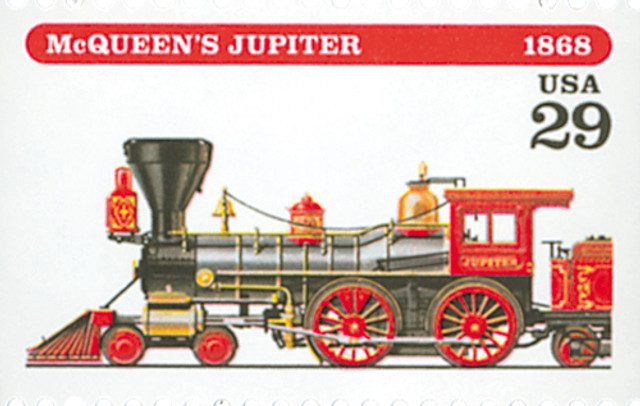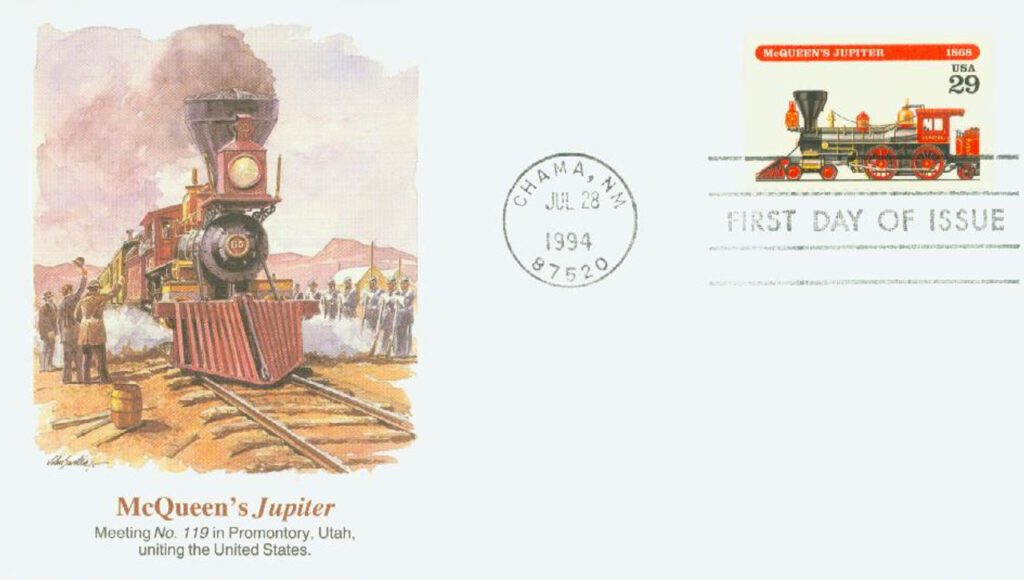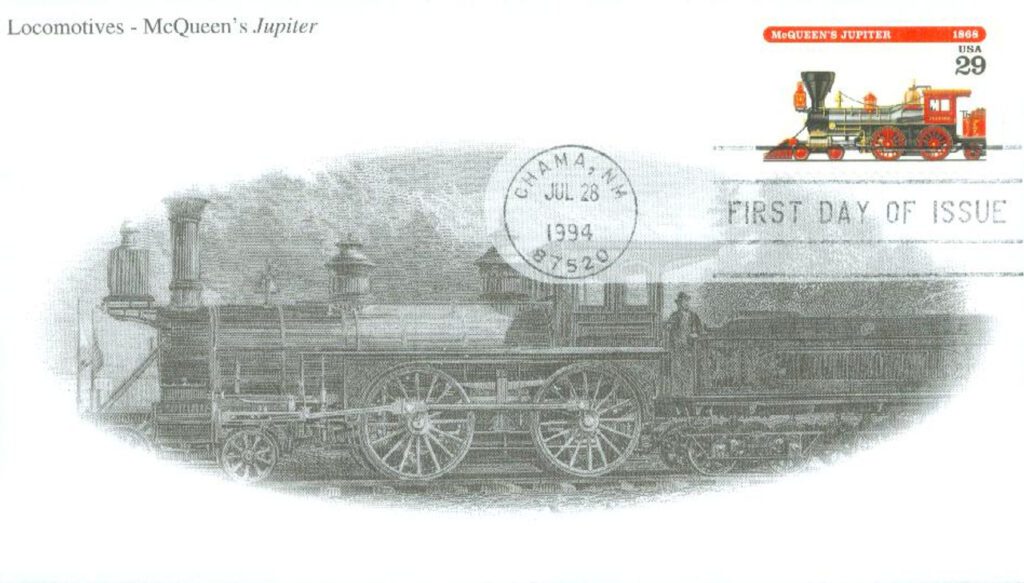
The Jupiter, also known as Central Pacific Railroad #60, made its first run on March 20, 1869. Less than two months later, the Jupiter made history as one of the two locomotives that met at Promontory Summit, Utah to mark the completion of America’s First Transcontinental Railroad.
Jupiter was a popular name for locomotives in the 1800s. Named after the “King of Gods” or the “God of the Sky,” Jupiter was a name that inspired wonder and excitement. Walter McQueen designed his Jupiter, a 4-4-0 steam locomotive, and it was built in 1868 at the Schenectady Locomotive Works. Once complete, it was disassembled and transported by ship to the Central Pacific headquarters in San Francisco. Jupiter was reassembled and had its first run on March 20, 1869. It was run up and down a test track on Front Street and reportedly ran perfectly. Jupiter was then sent to Nevada to haul passenger trains. It would soon become a part of history…
Several years earlier, Theodore Judah approached the United States government with his dream of building a railroad that would extend from coast to coast. Eager to link the Western states to the Union, Congress agreed to his plan and in 1862 passed the Pacific Railroad Act, authorizing the building of a transcontinental railroad. Two companies were charted to do the job.
In 1863 the Union Pacific Railroad began laying tracks westward from Omaha, Nebraska, while the Central Pacific laid tracks eastward from Sacramento, California. By May 1869, the railroad was nearly complete and plans were being made for a grand ceremony at the point where both ends would meet, in Promontory Summit, Utah. Project manager and financier Leland Stanford selected the two trains that would participate in the Golden Spike Ceremony – Union Pacific No. 119 and Antelope. On May 5, Stanford took a train pulled by the Antelope to Reno, following Jupiter which was on its normally scheduled passenger run.

The railroad passed through a mountainside logging area, where workers were cutting down trees. They were used to seeing the trains pass and recognized Jupiter from its normal run. They didn’t expect there would be another train behind it, so they rolled a log down the hill before they could see Antelope coming. The log landed just beside the tracks and the engineer was unable to stop the train in time. Antelope hit the log and was partially damaged, though it was able continue its journey at a slower speed.
With Antelope damaged, Stanford had to select a replacement, and chose Jupiter, just six weeks into its service. Pressed into action, Jupiter arrived at Promontory on May 7 and represented the western portion of the track in the special ceremony on May 10. In a jubilant celebration, officials from both railroads drove ceremonial golden spikes to hold down the last rail – the 2,000-mile-long line spanning the West had at long last been completed. A simple accident catapulted Jupiter into the record books.
After the ceremony, Jupiter remained in service with the Central Pacific. In the 1870s, the railroad dropped the names of their trains, so Jupiter became known as C.P. #60. It was later acquired by the Southern Pacific and renamed S.P. #1195 and converted to burn coal. It was sold one more time, to the Gila Valley, Globe and Northern Railway, which sold it for scrap in 1909. In the years to come, other trains stood in for Jupiter at historic reenactments of the Golden Spike Ceremony. In the 1970s, the National Park Service commissioned full-size replicas of Jupiter and No. 119 for the Golden Spike National Historic Site. The replicas make regular demonstration runs for visitors.
View photos and more from the Golden Spike National Historical Park website.
| FREE printable This Day in History album pages Download a PDF of today’s article. Get a binder or other supplies to create your This Day in History album. |
Discover what else happened on This Day in History.




Interesting bit of history
Never heard this story before. Love the details of history we have not heard at school.
My Dad and I journeyed from California to attend the 100th anniversary of the Golden Spike ceremony at Promontory on May 9, 1969.. The site was only partly developed, but the replicas of Jupiter and #119 were there and pulled up cowcatcher to cowcatcher to reproduce the famous photo. Re-enactors played the part of the dignitaries, and everybody had a great time. I returned to the fully developed historic site in 1990. The site is north of the Great Salt Lake and is pretty remote, but it is worth while to make the trip if you are in Utah. A word about the famous photo of the two locomotives and the assembled workers. There are no Chinese in the picture. Chinese laborers largely built the Central Pacific line, but they were shoved out of the way for the commemorative photograph.